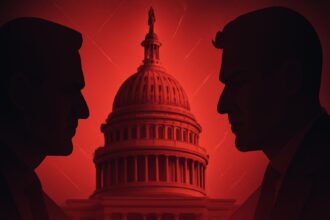Starbucks Announces Major $1 Billion Restructuring Initiative
Starbucks Corporation revealed a comprehensive $1 billion restructuring plan on Thursday, involving the closure of a significant number of its North American coffeehouses and the reduction of its workforce. This move is a key component of CEO Brian Niccol’s “Back to Starbucks” strategy aimed at revitalizing the brand’s core customer experience and operational efficiency.
Store Closures and Workforce Reductions
According to a recent Securities and Exchange Commission filing, Starbucks expects the total number of company-operated stores in North America to decline by approximately 1% during fiscal year 2025. This reduction equates to an estimated 500 gross store closures, as analyzed by TD Cowen.
The restructuring also includes layoffs affecting roughly 900 non-retail employees, with notifications scheduled to begin immediately. This marks the second round of workforce reductions under Niccol’s leadership, following an earlier layoff of 1,100 corporate staff members.
Financial Impact and Cost Breakdown
Starbucks anticipates that 90% of the restructuring costs will stem from its North American operations. The company projects approximately $150 million in employee separation expenses and around $850 million in charges related to store closures. The majority of these costs are expected to be incurred during fiscal 2025.
Strategic Focus on Customer Experience and Store Investment
Starbucks plans to end fiscal 2025 with nearly 18,300 total locations across the U.S. and Canada, including both company-operated and licensed stores. The company intends to resume expansion and open new stores beginning in fiscal 2026.
Niccol emphasized prioritizing investments “closer to the coffeehouse and the customer” to counteract a six-quarter decline in same-store sales in North America, a result of intensifying competition and increasingly price-conscious consumers.
“These steps are necessary to build a better, stronger, and more resilient Starbucks that deepens its impact on the world and creates more opportunities for our partners, suppliers, and the communities we serve,” Niccol wrote in an internal letter to employees.
Employee Support and Union Engagement
Baristas affected by store closures will be offered transfers to nearby locations where feasible, or severance packages otherwise. Starbucks Workers United, representing over 12,000 baristas across more than 650 cafes, indicated plans to request formal bargaining with the company regarding the closures.
The union affirmed its commitment to negotiating effect bargaining to ensure impacted workers are placed in alternate Starbucks locations per their preferences.
Operational Changes and Leadership Updates
In addition to store closures and layoffs, Starbucks is implementing a return to a four-day in-office workweek for employees starting next month. Niccol has also restructured the executive leadership team, appointing CFO Cathy Smith, Global Chief Brand Officer Tressie Lieberman, and Chief Operating Officer Mike Grams, all of whom bring experience from Niccol’s previous roles at Chipotle and Yum Brands.
This restructuring follows Starbucks’ July announcement of the “Green Apron Service” initiative, which commits over $500 million to increased labor hours across company-operated cafes to improve service quality.
Outlook and Market Reaction
Following the announcement, Starbucks shares declined slightly by less than 1% during afternoon trading, continuing a year-to-date drop of more than 8%. Analysts note that the number of store closures exceeded earlier expectations, highlighting the company’s commitment to recalibrating its physical footprint in North America.
FinOracleAI — Market View
Starbucks’ $1 billion restructuring plan represents a decisive effort to stabilize and strengthen its North American business amid ongoing challenges. The strategic focus on closing underperforming stores and reallocating resources toward enhancing the in-store customer experience aligns with broader retail trends emphasizing quality over quantity.
- Opportunities: Improved customer satisfaction through enhanced store environments and increased labor hours could drive traffic and sales recovery.
- Risks: Store closures and layoffs may impact brand perception and employee morale, potentially affecting service quality.
- Financial Impact: Significant restructuring charges will pressure near-term earnings but could yield long-term operational efficiency.
- Market Position: Strengthening core operations may better position Starbucks against rising competition and changing consumer preferences.
Impact: The restructuring is a strategic recalibration that should ultimately enhance Starbucks’ competitive position, though it presents short-term financial and operational challenges.













